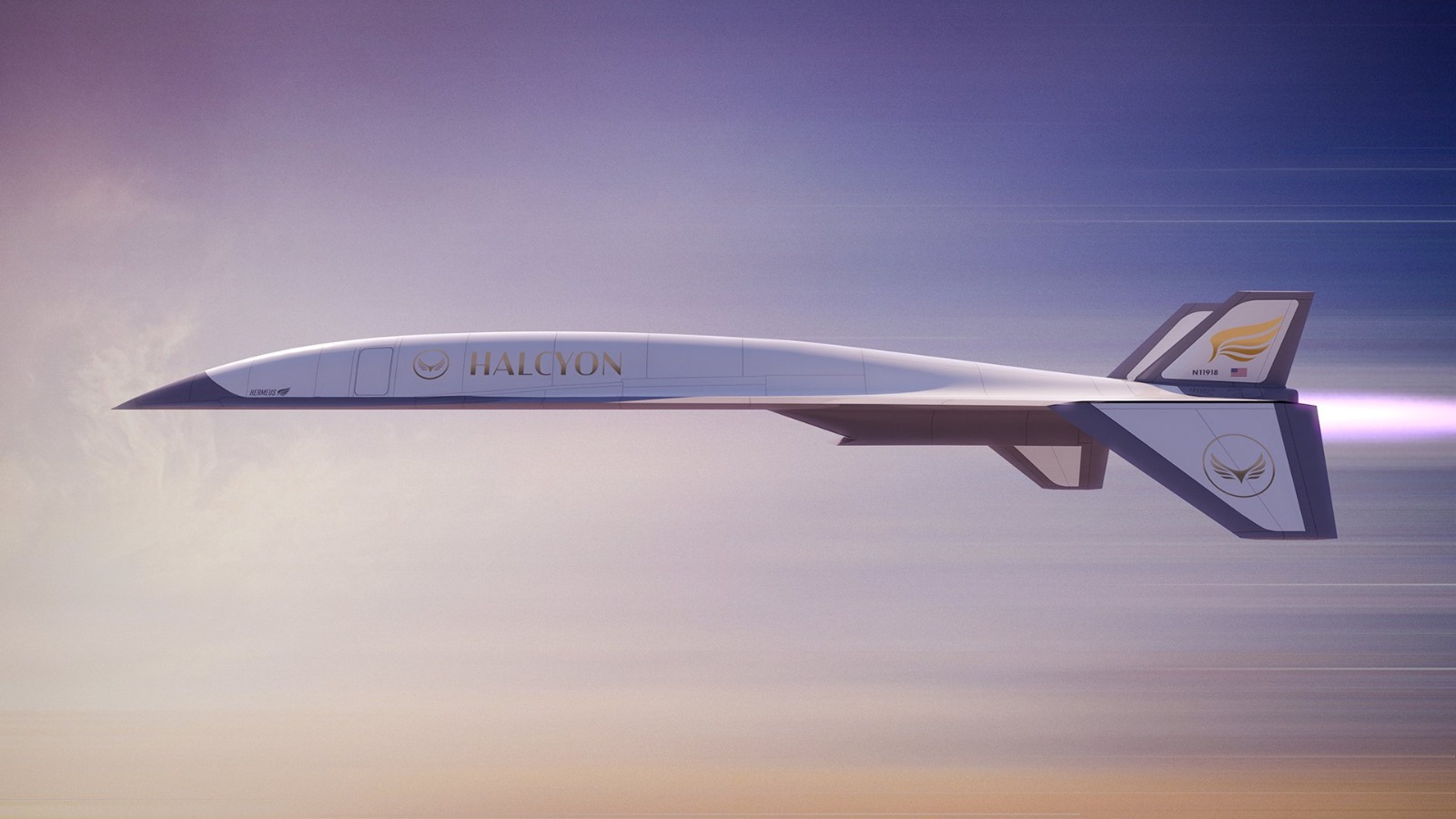

Cosmox Blogs
Hypersonic Flight: A Journey from Sound Barrier to Beyond
It was October 14, 1947 when Cap.Charles Yeager flying the Bell X-1(A rocket engine–powered aircraft) broke the sound barrier and became the person in the first aircraft to have exceeded the speed of sound and got the date marked in history as a giant technological leap. Since then engineers and scientists didn’t look back and kept on moving forward and the result is that they helped lay the foundation of today’s and the coming future’s flight technology.
Types of Supersonic Engines
Turbojets:
These types of engines are commonly found military and civil aircraft that can achieve speeds up to Mach 2. These engines are airbreathing jet engines(a jet engine in which the exhaust gas which supplies jet propulsion is atmospheric air, which is taken in, compressed, heated, and expanded back to atmospheric pressure through a propelling nozzle. But due lack of a bigger exit area its propelling nozzle is unable to create extra internal thrust and due to its large components its unable to withstand high aerodynamic heat and friction which limits it to a speed to Mach 2.
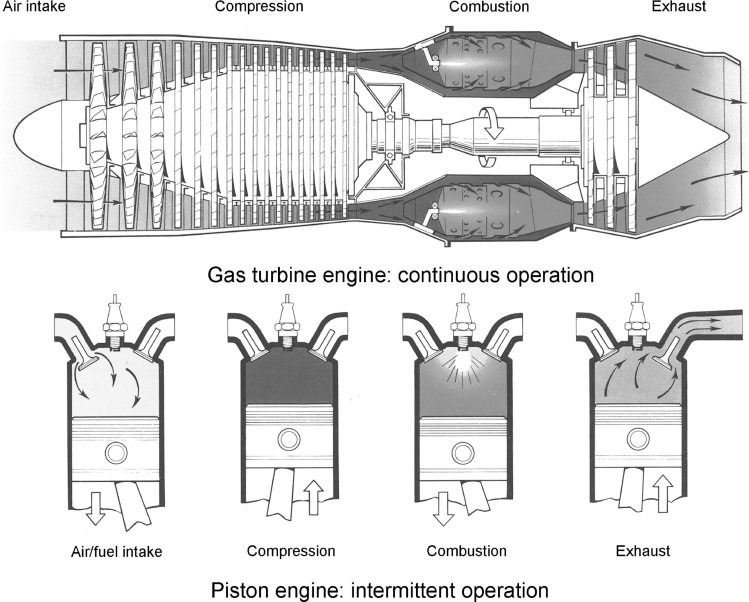
Ramjet:
This is also a form of an airbrearthing engine that requires forward motion of the engine to provide air for combustion, these jets can achieve speeds up to Mach 6 (7,400 km/hr.), due to its simple and efficient mechanism it allows a larger exit area, a greater internal thrust and a well-designed engine allows it to withstand a much higher aerodynamic friction which causes less heat and increases its flight capabilities to up to Mach 6.
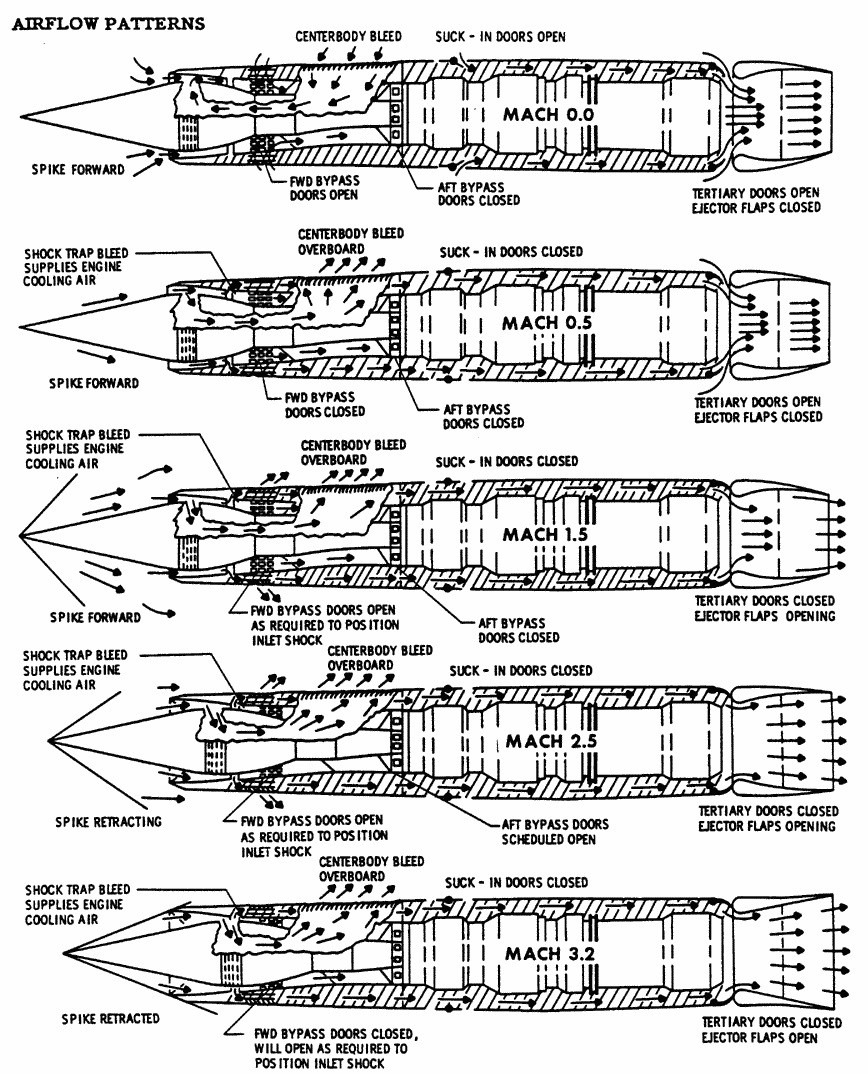
Scramjet:
This type of engine is a variant of a ramjet airbreathing jet engine in which combustion takes place in supersonic airflow. So one can say that this engine is an upgraded form of the ramjet and with a unique design that allows it to have an even bigger exit area and unlike a ramjet decelerates the air to subsonic velocities before combustion using shock cones, a scramjet has no shock cone and slows the airflow using shockwaves produced by its ignition source in place of a shock cone. All these features allows scramjets to withstand unconceivable amount aerodynamic friction an achieve speeds up to Mach 10.
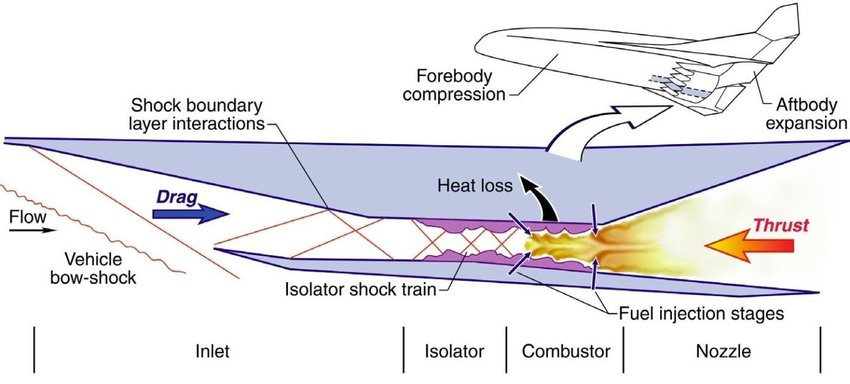
From supersonic to hypersonic:
All civil aircrafts you see right now are either transonic or subsonic meaning they are lower than Mach 1(Mach is the ratio of speed of an aircraft to the speed of sound) but this was certainly not the case with Concorde. Concorde was the first civil aircraft to be supersonic and have speed up to Mach 2.04. An aircraft made possible with the collaboration of British and French government, studied and researched in 1954 and first took off in 1969. Its flight capabilities was made possible with its unique design and marvelous Olympus 593 engine an Anglo-French Turbojet capable of producing 37000 lbf (160 kN) of thrust which gave Concorde such unbelievable speed capability.
But the military was far-far ahead of what civil aircraft companies were doing there was a race between governments of all countries to add supersonic flight capabilities but the USA eventually came on the top with Lockheed SR-71 Blackbird in 1964 an aircraft that completely revolutionized aviation. Engineered by aerospace engineer Kelly Johnson, A strategic reconnaissance aircraft that helped the Usa carry out many intelligence operations in multiple countries even in Soviet Union and even though it had no weapons attached to it, that made it fast enough to get the better off every surface to air missiles and other weapons it came up against but none was even able to touch this beast and with an jaw dropping speed of Mach 3.2 and an ascend of up to 80000 ft. Its Pratt and Whitney J-58 engines Ramjet gave it this capability. But even then and now there has been extensive research going on to improve every bit of hypersonic tech to its singularity.
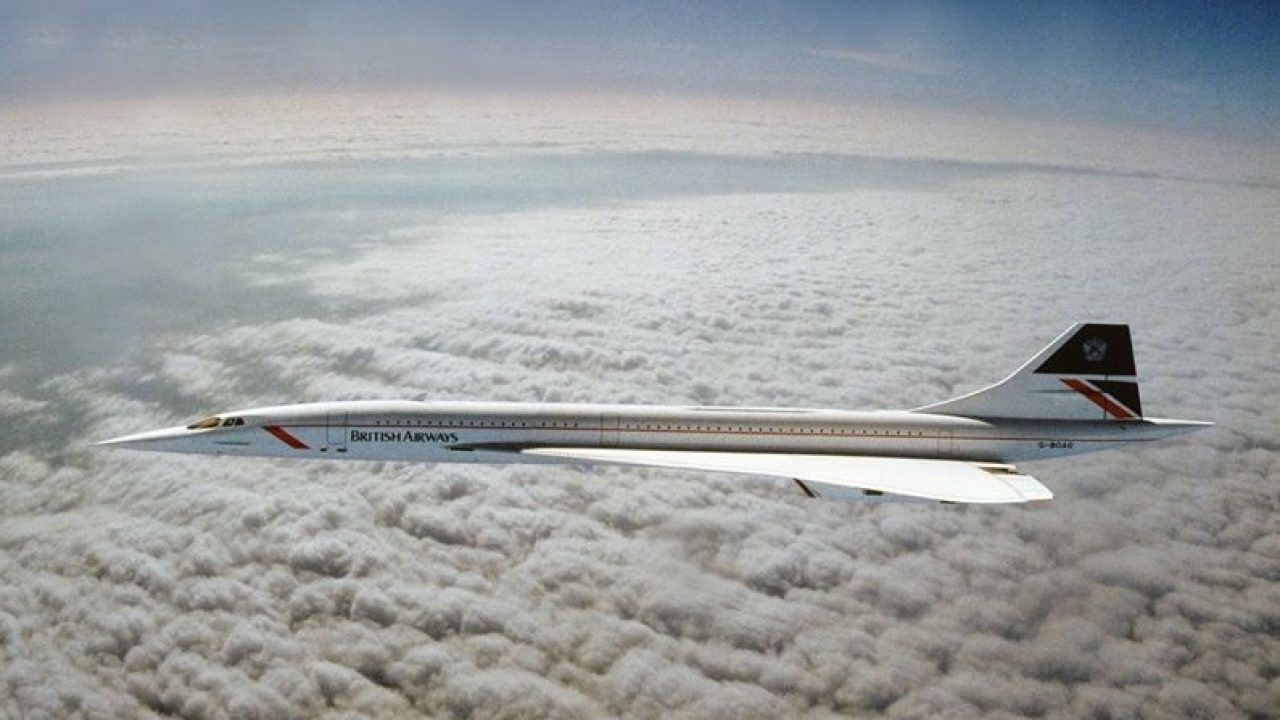
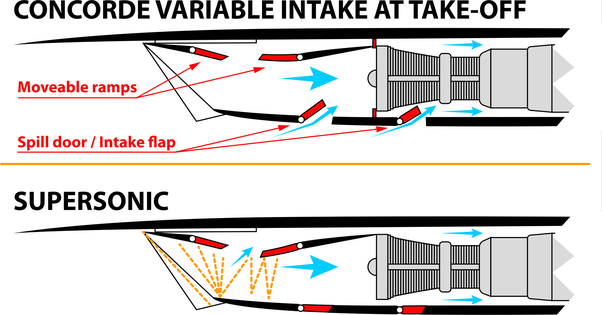
The insane engineering of hypersonic aircrafts:
Hypersonic aircrafts are the aircrafts with speed>Mach5 (5960 km/hr). These types of aircrafts often happen to push scramjets to their limits. At speeds above Mach 5 the aerodynamic friction and heat increase to a thermometer breaking threshold as the kinetic energy of the moving object is converted into heat.
The Physics of it:
Stagnation point: In fluid dynamics, a stagnation point is a point in a flow field where the local velocity of the fluid is zero. The stagnation point of air flowing around a body is a point where its local velocity is zero. At this point the air flows around this location. A shock wave forms, which deflects the air from the stagnation point and insulates the flight body from the atmosphere.[6] This can affect the lifting ability of a flight surface to counteract its drag and subsequent free fall.
High temperature effect: When the aircraft flies at such high speeds a large amount of aerodynamic friction is induced on the aircraft and its kinetic energy is converted to heat by friction which causes the aircraft withstand a huge amount of heat. As ratio of kinetic energy to the internal energy of the gas increases as the square of the Mach number. Due to high temperatures behind the shock wave, dissociation of molecules in the air becomes thermally active. For example, for air at T > 2000 K, dissociation of diatomic oxygen into oxygen radicals is active: O2 → 2O For T > 4000 K, dissociation of diatomic nitrogen into N radicals is active: N2 → 2NConsequently, in this temperature range, a plasma forms: —molecular dissociation followed by recombination of oxygen and nitrogen radicals produces nitric oxide: N2 + O2 → 2NO, which then dissociates and recombines to form ions: N + O → NO+ + e−
Low density flow: At standard sea-level condition for air, the mean free path of air molecules is about Low density air is much thinner. At an altitude of 104 km (342,000 ft) the mean free path is Because of this large free mean path aerodynamic concepts, equations, and results based on the assumption of a continuum begin to break down, therefore aerodynamics must be considered from kinetic theory. This regime of aerodynamics is called low-density flow. For a given aerodynamic condition low-density effects depends on the value of a nondimensional parameter called the Knudsen number(Kn) defined as Kn = wavelength/L where "L" is the typical length scale of the object considered. The value of the Knudsen number based on nose radius, Kn = wavelength/R can be near one. Hypersonic vehicles frequently fly at very high altitudes and therefore encounter low-density conditions. Hence, the design and analysis of hypersonic vehicles sometimes require strict consideration of low-density flow. New
Thing shock layer: in picture format below
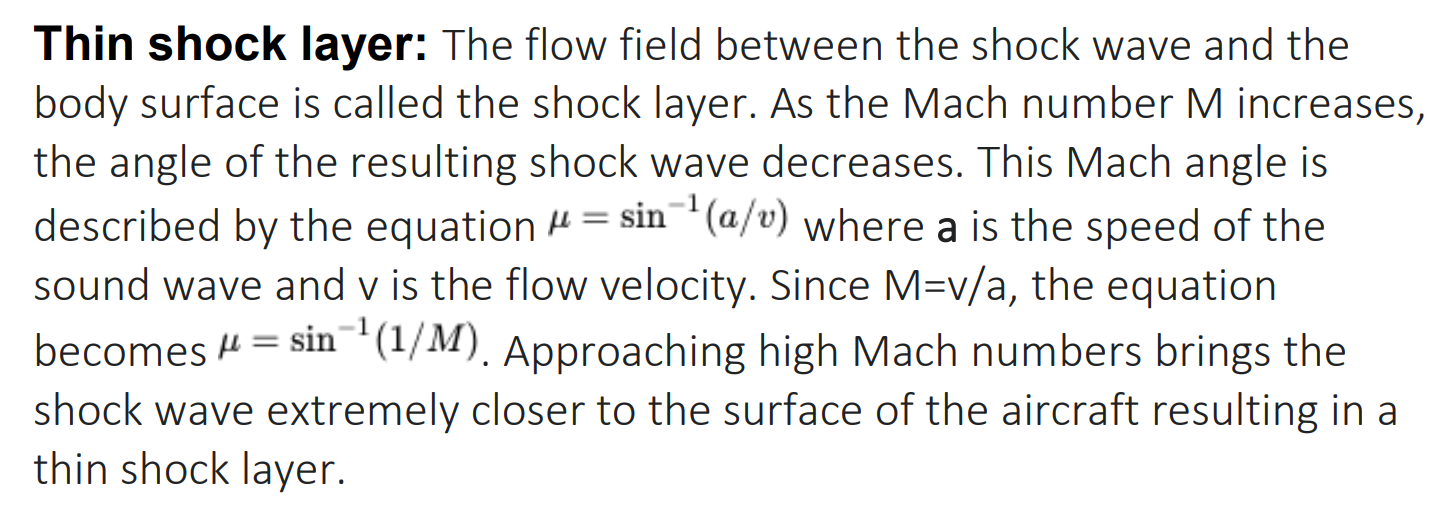
Viscous interaction: The compressible flow boundary layer increases proportionately to the square of the Mach number, and inversely to the square root of the Reynolds number. At hypersonic speeds, this effect becomes much more pronounced, due to the exponential reliance on the Mach number. Since the boundary layer becomes so large, it interacts more viscously with the surrounding flow. The overall effect of this interaction is to create a much higher skin friction than normal, causing greater surface heat flow. Additionally, the surface pressure spikes, which results in a much larger aerodynamic drag coefficient. This effect is extreme at the leading edge and decreases as a function of length along the surface.
Entropy layer: The entropy layer is a region of large velocity gradients caused by the strong curvature of the shock wave. The entropy layer begins at the nose of the aircraft and extends downstream close to the body surface. Downstream of the nose, the entropy layer interacts with the boundary layer which causes an increase in aerodynamic heating at the body surface. Although the shock wave at the nose at supersonic speeds is also curved, the entropy layer is only observed at hypersonic speeds because the magnitude of the curve is far greater at hypersonic speeds. Due to this reason the nose of the aircraft faces the highest amount of aerodynamic heating
Propulsion:
Controlled detonation:
Researchers in China have used shock waves in a detonation chamber to compress ionized argon plasma waves moving at Mach 14. The waves are directed into magnetohydrodynamic (MHD) generators to create a current pulse that could be scaled up to gigawatt scale, given enough argon gas to feed into the MHD generators.
Rotating detonation:
A rotating detonation engine (RDE)might propel airframes in hypersonic flight; on 14 December 2023 engineers at GE Aerospace demonstrated their test rig, which is to combine an RDE with a ramjet/scramjet, in order to evaluate the regimes of rotating detonation combustion. The goal is to achieve sustainable turbine-based combined cycle (TBCC) propulsion systems, at speeds between Mach 1 and Mach 5.
Promising players for the future
SR-72 Black Bird
Successor to the legendary sr-71 blackbird, Lockheed Martin Company is on its way to launch this aircraft into the yonder skies. With a blazing speed of over Mach 6.2((7390 km/hr, 2 km/sec) which is almost double that of Sr-71 max speed). And would also be capable of weapons which was a thing that the Sr-71 lacked and that to hypersonic and would able to travel from New York to Paris in just 47 minutes. It is said to enter service in the 2030s for the U.S. military with also an unmanned Ai pilot to increase the aircraft’s maneuvering capabilities to its enormous potential. I think it’s obvious that the father is going to be very proud of his son.
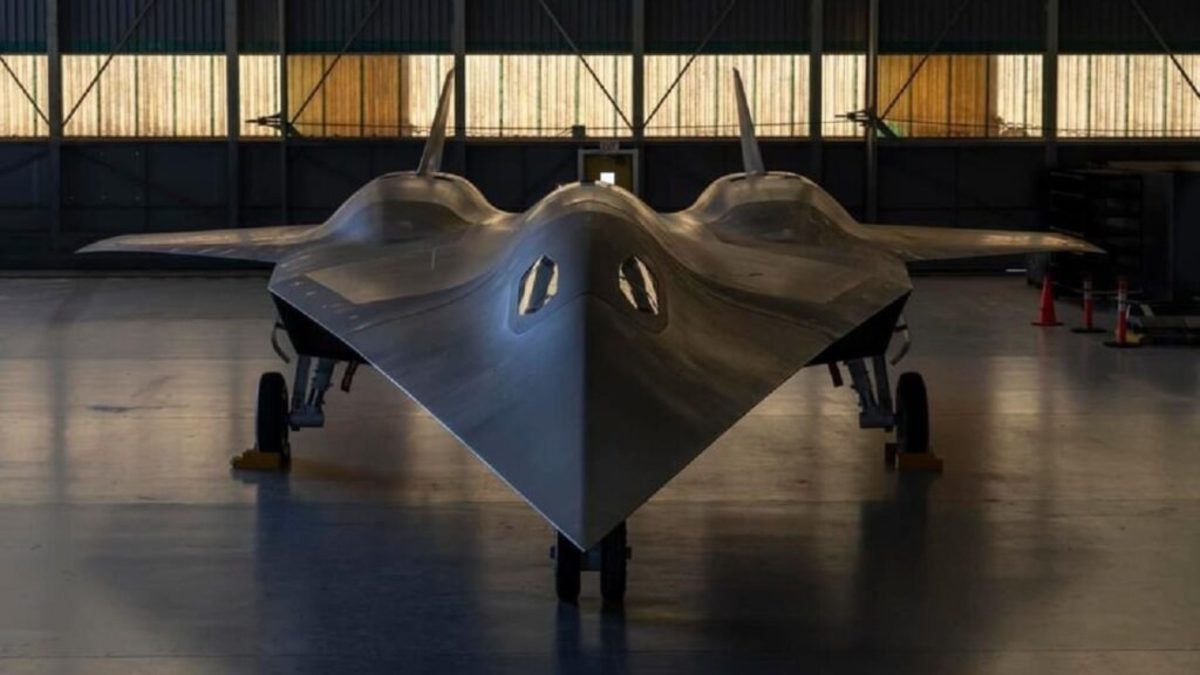
Halcyon
After reading this a thought might have struck your mind that hypersonic flights are all going to be stuck around military and intelligence and would not be for civilians, well lucky for us Hermeus Corp a promising aerospace company is working on Halcyon an hypersonic aircraft capable of Mach 5 and will probably be the first hypersonic civil aircraft and would have the privilege of over 125 transoceanic routes at hypersonic speeds. This aircraft would fly as high as 90,000 ft. altitude and with a 20 passenger capacity it promises its passengers with an unprecedented experience with high resolution cameras installed in the aircraft to give passengers a full 3d view of the breathtaking stratosphere. It launches in 2029 so folks get tuned.

Future Outlook:
While the developments in hypersonic flight are exciting, the journey doesn't end here. Ongoing research and innovation continue to push the boundaries of what's possible in this field. Scientists and engineers are exploring new materials, propulsion technologies, and design concepts to overcome the remaining challenges and unlock the full potential of hypersonic flight.
One area of focus is materials science, where researchers are developing advanced materials capable of withstanding the extreme temperatures and pressures experienced during hypersonic flight. These materials need to be lightweight, heat-resistant, and durable to ensure the safety and reliability of hypersonic vehicles.
Another critical aspect is propulsion technology, where the quest for more efficient and powerful engines drives innovation. From scramjets to rotating detonation engines, engineers are exploring new propulsion concepts to propel hypersonic aircraft to even greater speeds while maximizing fuel efficiency.
Beyond technological advancements, there are also considerations about the broader applications of hypersonic flight. From military reconnaissance and surveillance to commercial transportation and space exploration, the possibilities are vast. However, challenges such as regulatory approval, safety standards, and environmental impact must be addressed to realize the full potential of hypersonic flight in these domains.
As we look to the future, the journey towards practical and widespread hypersonic flight is filled with opportunities and challenges alike. By staying informed, engaged, and collaborative, we can navigate this journey together and shape the future of aviation in the hypersonic era. So let's keep our eyes on the horizon and continue pushing the boundaries of what's possible in the world of hypersonic flight
Conclusion
The future of hypersonic aviation seems as bright as the sun, as new innovations and designs are taking place at an exponential rate by the collective work of innumerable genius scientists and engineers and as we leap forward the day won’t be far away when the sun never sets on these aircrafts.

Cosmox Blogs
A non profit organization that works on writing and delivering blogs on cosmology, natural sciences & environment, so that people can learn more about it. We even run a forums page, where our users interacts with each other and discuss about Cosmology, Natural Sciences & Astronomy. We even run an instagram and a youtube channel with podcasts.